When EN Athlete Abbey Bonner decided to take on Challenge Roth as her first Iron Distance Triathlon, she knew it would be an exciting yet CHALLENGING road (see what we did there?). Nothing she can’t handle. She has her WHY…she has her WHEN (all the races leading up to Challenge Roth)…and Endurance Nation has her HOW.
The Training Breakdown:
When setting your goal high, we recommend you set tiny goals along the way. Not only is this a major mental building block but it lessens the pressure mounting for the big event.
Abbey’s Race Schedule:
- May Swashbuckler Middle Distance
- July Long Course Weekend (Iron Distance) 2.4 mile swim (Friday), 112 mile bike (Saturday), 26.2 mile run (Sunday).
- August Velo South 100 Miler
- October Challenge Mallorca 70.3
- July 2019 Challenge Roth
What Does That Look Like Inside EN?
With over 70 plans updated yearly (and growing), Endurance Nation athletes have virtually unlimited options for creating the perfect season. With Coach and Team input, modifications and personalizations are quick and simple.
Abbey is on our TEAMEN option, which gives her the Endurance Nation community to not only interact with and learn from, but to challenge her ideas. Read on to see just how helpful this proved to be in Abbey’s last race.
In addition to a community of athletes all over the world, she utilizes her one-on-one time with a Coach, through her coach thread. Coach Patrick helped lay out her training plans based on her schedule, her work/home life and her current ability/goals.
To save time on specifics to Abbey, let’s break down each training plan and why–
- Coming out of the 2017 season …..
- Run Durability 1 (9 months out)
- Run Durability 2 (8 months out)
- Intermediate OutSeason® (Run Focus) Plan
- Swim Camp
- Intermediate EN*Half
- Post-Half Iron Transition Plan
- Beginner EN*Full Plan, Minimalist Edition (Time-Focused Training)
- Post-Ironman Transition Plan
Ok, we want to stop here as the outline above leads us to her Long Course Weekend. Let’s dissect the build-up to that race, what she did, how she utilized the Team, what she learned and its significance to her confidence for Challenge Roth.
The Event
Let’s dive in with Abbey as we ask her about her most recent race.
The Long Course Weekend Wales is an Iron Distance Triathlon based in Tenby, Wales that is spread over 3 days
- Friday evening: 2.4 mile sea swim (2 x lap incl. Australian exit)
- Saturday: 112 mile bike (7933 ft elevation gain)
- Sunday: 26.2 mile run(1824 ft elevation gain)
Her goals were:
- To complete all 3 days. It is common for many “Long Course Weekenders” to not start the run or drop out of the run. I do not want to be one of them.
- To race according to plan and to stop myself from getting excited and carried away in the swim and on the bike – I MUST leave enough in the tank for the run on Sunday.
(Spoiler Alert…. She crushed it!)
Lessons Learned
Overall / Preparation before the event
Things that worked:
- Following the EN IM Minimalist training plan. This plan could easily pass for being tailor-made for this event, as every week the plan included a swim on the Friday, Long bike on Saturday and Long run on the Sunday – doing the long run on the Sunday after my long bike every week prepared me for how I would feel on marathon day.
- Training with my planned nutrition: I worked out what to take and when, according to my body weight, and I “fed” during my training, even on shorter workouts. This meant I didn’t snack much in between meals whilst training and on the event days this kept gastric issues to a minimum and stopped me from bonking.
- Using Protein supplements – this is the first time I have used protein shakes or protein bars after workouts (in addition to my meals). I tracked my diet for a while at the beginning of my training on MyFitnessPal and realized I wasn’t taking in enough protein. I tried to do this naturally with “real food” but couldn’t eat the amount of protein which was recommended. Using protein shakes and bars was the only way I could reach my daily protein goals and I believe this helped with my recovery and injury prevention
- I trialed a supplement called XtremeEndurance. It is supposed to help reduce muscle stiffness. I usually experience high amounts of muscle stiffness in my legs, but this was significantly reduced during training and I was amazed by the lack of “stiffness” I experienced during the 3 days of this event and after the marathon. It sounds crazy, but I am sure this supplement helped in this area.
- Daily stretching of key areas and daily foam rolling – this kept me supple and kept injury at bay; I also see a massage therapist once a month or more if I think I need it.
- Writing a Race Plan – I wasn’t going to bother with a race plan but another EN Teammate inspired me with his Austria IM Plan so I decided to do it and I’m glad I did. It was so important to my success. It reduced my stress and ensured myself and Karl knew what I needed, what I needed to do and when; over the 3 days.
- Training on hilly routes on my long bike rides and long runs – this prepared me for those hills
- I was very organized and had everything packed by Tuesday night (for travel to the event on Thursday). This was brilliant as it allowed me to concentrate on my work (I’m self-employed) without stressing about what I needed to pack and prepare for the event.
- I checked where the swim/bike run starts were on Friday afternoon so I knew where to go and how long it would take to get there at the start of each event.
- Getting a Post-Event massage at the venue – I’ve never done this before, but I am sure this contributed to my lack of muscle stiffness after the marathon, and I enjoyed being “looked after” at the end of the event
- To race according to plan and to stop me from getting excited and carried away in the swim and on the bike; thanks for emphasizing the importance of this by fellow teammates.
Lessons Learned:
- “Beet It” (beetroot shots) don’t work for me; I tried these pre-event but they gave me a bad stomach. I stopped taking them a day before my swim
- Study the bike and run routes in more detail and if possible re-con the bike course. I didn’t know the bike or run routes as well as I should have done. This hindered me a little bit on the bike because when I was out on the bike I wasn’t sure which section of the bike route I would be repeating. I would have been better to know. I also hadn’t studied the run route. Luckily I discussed what was coming up with my fellow marathoners during the first 6 miles, but if I hadn’t have had this opportunity I would have had a few shocks.
Our Key Summary: If you fail to plan you plan to fail — Abbey tried and tested, listened to her teammates, stayed very organized and worked the system day in and day out. Major confidence booster for her regardless of course time.
The Swim
Things that worked:
- Fixing my sighting points so I wasn’t relying on sighting the buoys – the sun was setting behind the shoreline, so we couldn’t see anything swimming back to the beach. My sighting point was a gap in the skyline which navigated me in o the perfect landing spot
- I participated in a middle distance triathlon a few months ago. This had a mass swim start and was brutal. My Long Course Weekend swim was equally brutal, lots of kicks in the face and leg pulling, but I was able to deal with it calmly because I could draw back on my experience from earlier on in the year.
- Having a post-swim plan was invaluable. We got back to the hotel at around 9:15 pm at night, but because I had a list of things I needed to do, they were done by 10:45 pm and I was in bed ready for the early start on the bike the next day
Lessons Learned:
- If other people are in the water acclimatizing get in with them to warm-up.
- I suffered from leg cramps (calf, Hamstrings, Quads) during the swim which hindered my speed and also my run along the beach across the finish line. I am not sure why I experienced this because I don’t suffer from this in training; perhaps it was because I didn’t warm-up or perhaps it was that it was dehydration so I plan on taking a salt tablet 30 minutes before my swim next time or maybe I should drink an electrolyte drink beforehand as well.
- Fix a meeting point for after the finish with loved ones and stick to it. Karl (my husband) and I had agreed on a meeting point, but we saw each other at the Finish and Karl shouted out to meet me somewhere else. In the hustle and bustle, I didn’t hear him. We spent a long time waiting for each other at the different meeting points. We eventually found each other but by then I was shivering.
Our Key Summary: Knowing how to pivot when things don’t go accordingly to plan (which will always happen) is key. The biggest strength you can have at this point is mental strength. Stay calm and focused and deal with everything you can control and let go of what you can’t.
The Bike:
Things that worked:
- Getting to the start early. My aim was to leave in the first wave and I am pleased to say that I was the 4th cyclist to start.
- All of my long rides were hilly. This conditioned my body and mind for the hilly course. This definitely helped me successfully complete the bike course.
- I built my long training rides up by working to distance goals, not to time. The longest ride on my EN Plan is 6 hours. I knew this was a couple of hours short of the time it would take me to complete 112 miles at this event, so in the months leading up to the event, I increased my long training rides by 10 miles every month. This lead to me competing 3 x 100-mile rides and 1 x 112-mile ride pre-event.
- Sticking to my power numbers. This was a draft legal event and I had a few riders who wanted me to join them and work together, but I let them go and stuck to my power numbers. If I had gone with them my ride would have been too inconsistent involving too many surges. I knew what I needed to do so I stayed in my box.
- Carrying my nutrition. What was on offer at the aid stations was poor and would not have sustained my bike ride – they consisted of haribos, cut up mars bars and very diluted energy drink.
- Having a plan for post-event – I was able to concentrate on my recovery and completed my eating and stretching routine according to plan after my ride and was well-prepared for my marathon the next day
Lessons Learned
- I suffered from stomach cramps in the last 15 miles. It didn’t hinder my ride but I would have struggled to have run off the bike as it was really bad when I finished and got off the bike. It turns out this was due to trapped wind. Karl gave me a lemonade and that instantly solved the problem. When I do a full Ironman triathlon I think I should consider carrying indigestion tablets or perhaps putting lemonade in special needs bags positioned on the bike or run courses; just in case this happens again
- My Garmin 520 froze at 72 miles. I used my Garmin watch after this but it wasn’t ideal. I now know how to unfreeze my Garmin if this happens again(press and hold the power button for ages), but in future, I think I will double record the bike course on my watch and Garmin, from the start.
- I must admit I did struggle on this ride, particularly in the last 15 miles. In hindsight, I think this was mainly because I missed the final long bike ride at week 18 in my training. This was planned, however, I think the gap in the long ride from them to event day was a mistake.
Our Key Summary: Even though carrying your own nutrition isn’t ideal, desperate times call for desperate measures and it worked! If your nutrition guidelines, what works for your body isn’t what is on course or what is on course isn’t ideal– that is when you should carry your own. If none of those things apply, save yourself the hassle and use on course nutrition, both in practice and race day of course! When electronics fail — don’t freak! Heart rate is a good backup and if even that isn’t working, you’ve put in the work, by feel shouldn’t let you down too much, the key here is to remain calm and just do the thing!
The Run:
Things that worked:
- Big breakfast in the morning – Karl was surprised at the large amount I ate at breakfast (Weetabix, poached eggs, bacon, toast, coffee, juice), but I felt needed it and it turned out to be true.
- Stretching post ride and in the morning – I felt surprisingly spritely and “loose” in the lead up to the marathon. Thanks to my teammate Al for bringing the importance of stretching and keeping mobile in the forefront of my mind.
- Carrying all my nutrition in my Spie belt – a total of 11 x Iso gels. I felt like a wally at the beginning because I seemed to be the only participant who was laden full of gels, however, the on-course nutrition was less than ideal, so I was glad I had it
- I trained with my nutrition and had no gastric issues
- Taking salt tablets – thanks teammate JoJo!- I hadn’t trained with salt tablets but took them with me just in case. I carried 4 x salt tablets with me. My calves got tight around mile 7 so I took a salt tablet and I felt the benefit almost instantly. I took all 4 x tablets during the course of the marathon. I really believe they stopped my calves and hip flexors stiffening up or cramping during the marathon
- Staying in my box, running to my numbers and being able to adjust my plan according to the conditions on the day. My plan was to run the first 6 miles at 10:30min/miles as this is normally Z1 HR, however, my HR was elevated from the start so I ran to HR for the first 6 miles instead of pace. This translated to 11 min/miles. Also when I reached a 14% hill at mile 4, I decided that time was irrelevant for this marathon – the goal was to complete. My new “loose” goal became to complete the marathon within 5 hours (my planned goal was to beat my NYC marathon time 4:36). I ended up crossing the finish line at 4:54.
- Walking the hills – this marathon had nearly 2000 ft elevation gains; Power walking up them was the key. This kept my heart rate at a manageable level
- I did not bring on the suck too early – this was at the forefront of my mind from miles 13-20. This worked and I finished strong and actually enjoyed this marathon!
- Making sure I had several than “one thing’s” to think about, thank you Teammate Mark S!
Lessons Learned:
- I had no problems on the marathon – I thank Endurance Nation for this – The EN way prepared me well
- I am very proud of my marathon Elevation/HR chart:
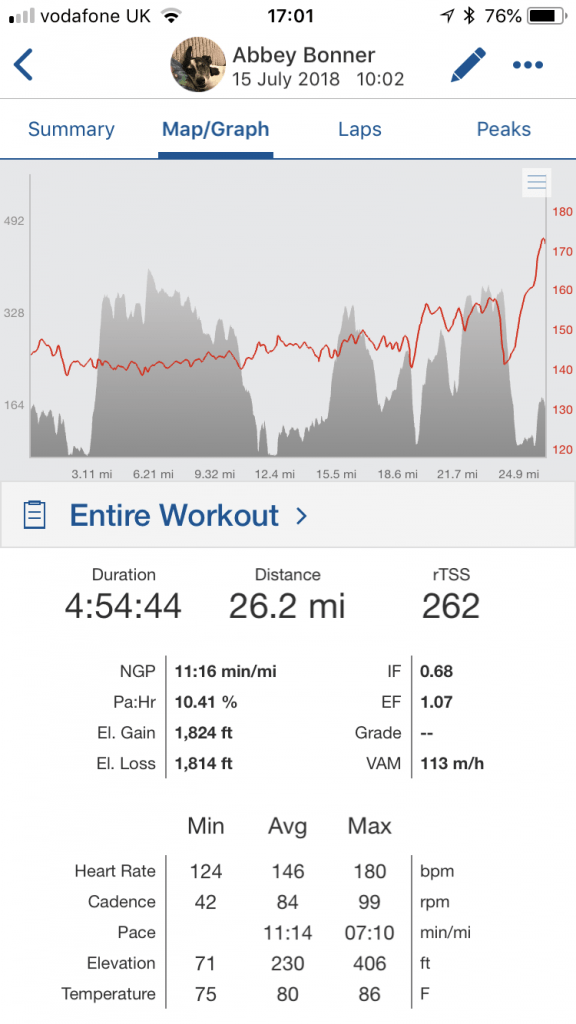
Our Key Summary: Use hills as an opportunity to focus on run form and don’t be afraid to take walk breaks. Focusing on HR is the key!
What are the next steps:
Abbey has already posted her full post-race report inside the Team and instantly is receiving feedback from what went wrong, what went right and how to adjust going forward. Since she has two more events this year, she is well on her way to enjoying a nice break then some OutSeason® fun leading up to her 2019 goal of Challenge Roth!
Whatever event or goal you have in mind, the process is easier than you think, especially with a community, coach and the right technology on your side. Between our forums, Final Surge, training calculators, race execution prep, sponsors and more….. anything you want to do, we can get you there!
See Which Training Option Is Right For You

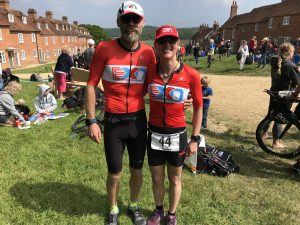
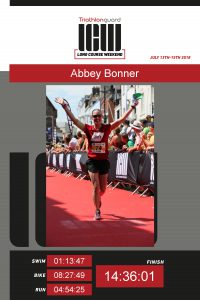
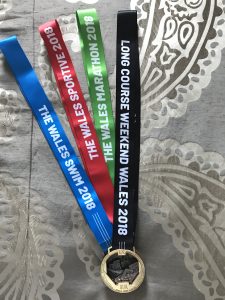
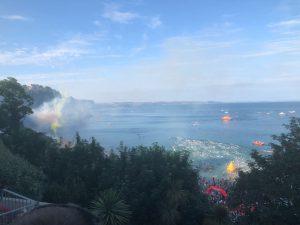
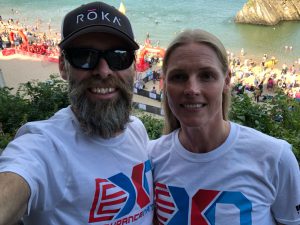
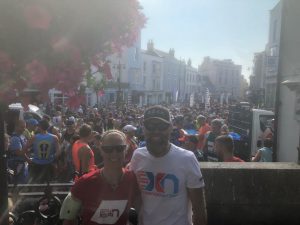
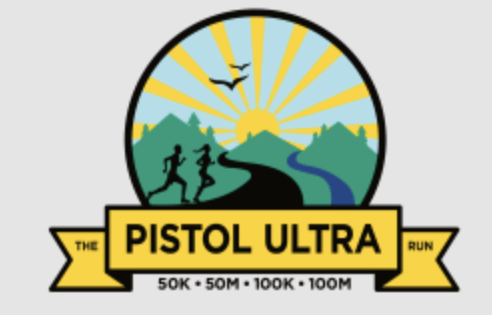

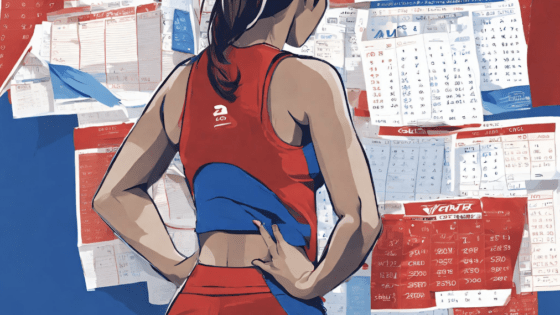
Leave a Reply